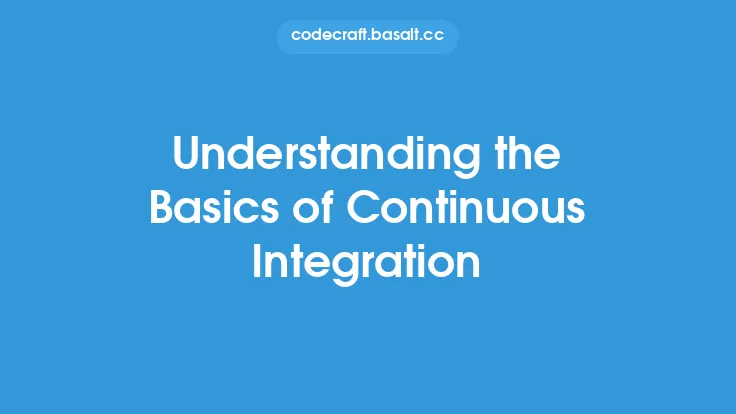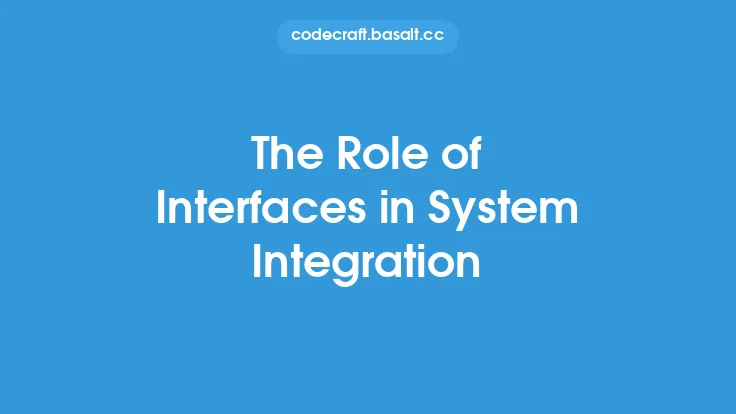System integration is a crucial aspect of software architecture that involves combining multiple systems, applications, or services to create a unified and cohesive whole. This approach enables organizations to leverage the strengths of individual systems, improve efficiency, and reduce costs. At its core, system integration is about creating a seamless and integrated environment where different systems can communicate, exchange data, and work together to achieve common goals.
Introduction to System Integration
System integration is a complex process that requires careful planning, design, and execution. It involves identifying the systems to be integrated, defining the integration requirements, and developing a strategy to achieve the desired outcomes. The integration process can be challenging, especially when dealing with legacy systems, disparate technologies, and different data formats. However, with the right approach and tools, system integration can help organizations to improve their operational efficiency, enhance customer experience, and gain a competitive edge in the market.
Types of System Integration
There are several types of system integration, including horizontal integration, vertical integration, and star integration. Horizontal integration involves integrating systems that are at the same level of abstraction, such as integrating multiple customer relationship management (CRM) systems. Vertical integration involves integrating systems that are at different levels of abstraction, such as integrating a CRM system with an enterprise resource planning (ERP) system. Star integration involves integrating multiple systems with a central hub, such as integrating multiple applications with a service-oriented architecture (SOA) bus.
System Integration Architectures
System integration architectures refer to the overall design and structure of the integrated system. There are several system integration architectures, including point-to-point architecture, hub-and-spoke architecture, and service-oriented architecture (SOA). Point-to-point architecture involves direct integration between systems, which can lead to a complex and rigid architecture. Hub-and-spoke architecture involves integrating systems through a central hub, which can improve scalability and flexibility. SOA involves integrating systems as services, which can improve reusability and interoperability.
System Integration Patterns
System integration patterns refer to the design patterns and principles that guide the integration process. There are several system integration patterns, including the request-response pattern, the event-driven pattern, and the messaging pattern. The request-response pattern involves sending a request to a system and receiving a response, which can be used for synchronous integration. The event-driven pattern involves publishing events to a system, which can be used for asynchronous integration. The messaging pattern involves sending messages between systems, which can be used for decoupled integration.
System Integration Technologies
System integration technologies refer to the tools and platforms used to integrate systems. There are several system integration technologies, including enterprise service buses (ESBs), message-oriented middleware (MOM), and application programming interfaces (APIs). ESBs provide a centralized platform for integrating systems, which can improve scalability and flexibility. MOM provides a messaging platform for integrating systems, which can improve decoupling and reliability. APIs provide a programmatic interface for integrating systems, which can improve reusability and interoperability.
System Integration Challenges
System integration can be challenging, especially when dealing with complex systems, disparate technologies, and different data formats. Some of the common system integration challenges include data inconsistency, system incompatibility, and integration complexity. Data inconsistency can occur when different systems have different data formats or structures, which can make it difficult to integrate the data. System incompatibility can occur when different systems have different technologies or protocols, which can make it difficult to integrate the systems. Integration complexity can occur when the integration process involves multiple systems, interfaces, and data formats, which can make it difficult to manage and maintain the integrated system.
System Integration Best Practices
To overcome the system integration challenges, it is essential to follow best practices that can improve the integration process. Some of the system integration best practices include defining clear integration requirements, using standardized integration protocols, and testing the integrated system thoroughly. Defining clear integration requirements can help to ensure that the integration process meets the business needs and objectives. Using standardized integration protocols can help to improve interoperability and reduce integration complexity. Testing the integrated system thoroughly can help to ensure that the system is reliable, scalable, and maintainable.
Conclusion
System integration is a critical aspect of software architecture that involves combining multiple systems, applications, or services to create a unified and cohesive whole. By understanding the different types of system integration, system integration architectures, system integration patterns, and system integration technologies, organizations can improve their operational efficiency, enhance customer experience, and gain a competitive edge in the market. However, system integration can be challenging, and it is essential to follow best practices that can improve the integration process and overcome the common system integration challenges. By adopting a fundamental approach to system integration, organizations can create a seamless and integrated environment that can help them to achieve their business objectives and improve their overall performance.





